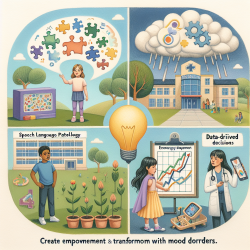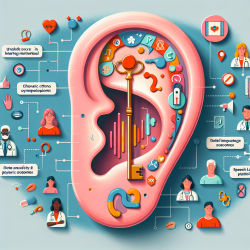Introduction
In the realm of speech-language pathology, understanding the broader context of a child's health can significantly influence therapeutic outcomes. Recent research has illuminated a critical link between mood disorders and frequent emergency department (ED) use. This connection presents both challenges and opportunities for practitioners dedicated to improving children's lives. By leveraging data-driven insights, we can craft targeted interventions that address the unique needs of children with mood disorders, ultimately enhancing their overall well-being and reducing the burden on healthcare systems.
The Research Findings
The study titled Association between mood disorders and frequent emergency department use: a cross-sectional study provides compelling evidence of the association between mood disorders and increased ED visits. Conducted using data from the Canadian Community Health Survey, the study found that individuals with mood disorders are 2.5 times more likely to be frequent ED users compared to those without such disorders. This finding underscores the importance of addressing mood disorders to mitigate frequent ED visits and associated healthcare costs.
Implications for Practitioners
For practitioners in speech-language pathology, these findings highlight the need for a holistic approach to treatment. Here are some actionable steps to consider:
- Screening and Early Identification: Implement regular screening for mood disorders in children receiving speech-language therapy. Early identification can lead to timely interventions, reducing the risk of frequent ED visits.
- Collaborative Care Models: Work closely with mental health professionals to develop integrated care plans. This collaborative approach ensures that children receive comprehensive support addressing both communication and emotional needs.
- Family Education and Support: Educate families about the signs of mood disorders and the importance of seeking early intervention. Providing resources and support can empower families to advocate for their children's mental health.
Encouraging Further Research
While this study provides valuable insights, there is a need for further research to explore the specific factors contributing to frequent ED use among children with mood disorders. Practitioners are encouraged to engage in research initiatives that delve deeper into:
- The role of specific mood disorders (e.g., depression, bipolar disorder) in influencing ED visits.
- The impact of socio-economic factors on access to mental health services and ED use.
- The effectiveness of targeted interventions in reducing ED visits among children with mood disorders.
Conclusion
Incorporating data-driven insights into practice is crucial for creating positive outcomes for children with mood disorders. By understanding the link between these disorders and frequent ED use, practitioners can develop targeted interventions that address the unique needs of this population. As we continue to explore the intersection of speech-language pathology and mental health, our commitment to improving children's lives remains steadfast.
To read the original research paper, please follow this link: Association between mood disorders and frequent emergency department use: a cross-sectional study.










